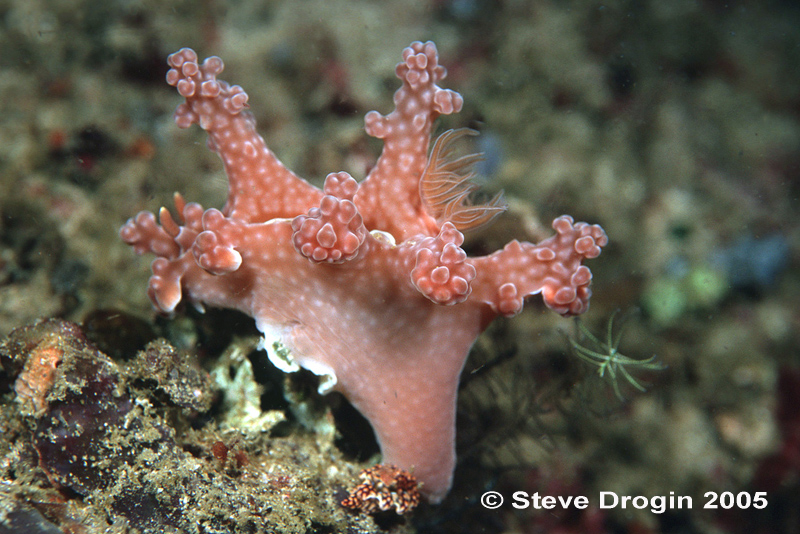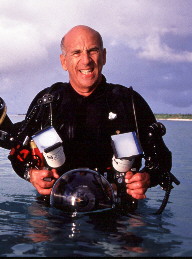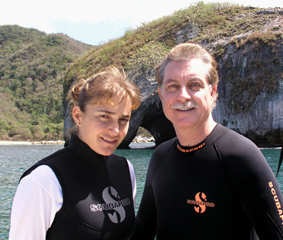 |
Ceratosoma alleni
Photo taken in Irian Jaya , IndonesiaPhoto courtesy of Steve Drogin
Ceratosoma alleni
I must admit Ė this is one of my very favorite nudibranch species. You can certainly understand this with a glance at Steveís photo here. Not only does it have an amazing story to its discovery and unusual biology, but it is named for and by very good friends.
Letís go back to the beginning. As the story goes, underwater photographer, nudibranch nut and friend, Jerry Allen of Mission Bay, California, first discovered this illusive species, near Dakak Resort, Dapitan, northern Mindanao in March 1993. Jerry, who loves to photograph gobies and blennies and such, was glued to the bottom waiting patently for a pair of Mandarin fish to come out and show off their colorful mating displays. Jerry always has that next contest-winning photo in mind. He had been fixed on the hole for some time when what appeared to be a soft coral moved in front of the camera lens. Now Jerry knew these corals weren't prone to get up and move around so he took a shot, to tell his friends at home this crazy story. It was not until he got his slides developed and shared the photo with others that we noticed the so-called coral colony had lamellate rhinophores and a branchial plume. It wasn't a soft coral at all, but a new species of Ceratosoma. The species was seen a second time by Webmaster Mike at Kirby's rock, Anilao, Batangas, Philippines in 1995. Later that same year Jerry and others returned to the spot to search for a specimen. They were successful and the species was later named 'alleni' in his honor.
Species of Ceratosoma are sponge eaters. So why evolve the disguise of a soft coral colony with the polyp retracted? Species practicing protective resemblance usually tend to look like their prey, such as our recently presented hydroid "mimic" and the Xenia mimicking Phyllodesmium sp. and Phyllodesmium jakobsenae . In C. alleniís case the notal appendages, which may have a secondary function of protecting the gill, look almost identical to the soft colors Paralemnalia and some species of Sinularia .
Maybe when we learn which species of sponge C. alleni feeds on we will see some resemblance there and answer this question.
Until now I believe his species has only been reported from the Philippines. Steve took this gorgeous photo in Irian Jaya, the Indonesia province making up the western half of the island of New Guinea. To my knowledge this is the first documented occurrence of the species outside of the Philippine archipelago. Way to go Steve.
Danville, Calif
Mar. 2005
Steve Drogin
Photo courtesy of James Watt of
Kona, Hawaii

Steve is a very active 65 year old amateur Diver/Photographer who spends full time traveling and diving the globe. He lives in La Jolla, California and is a member of the San Diego Underwater Photographic Society. Photographic credits include an article on the sunken fleet of Bikini Atoll in Sports Divers Journal(Issue 16) . Also his photos have also been featured during Discovery Channel's Shark Week promotions.
|
March 2005

Ali Hermosillo and Dave Behrens
Author:
Pacific Coast Nudibranchs
Send Dave mail at dave@seachallengers.com
|
